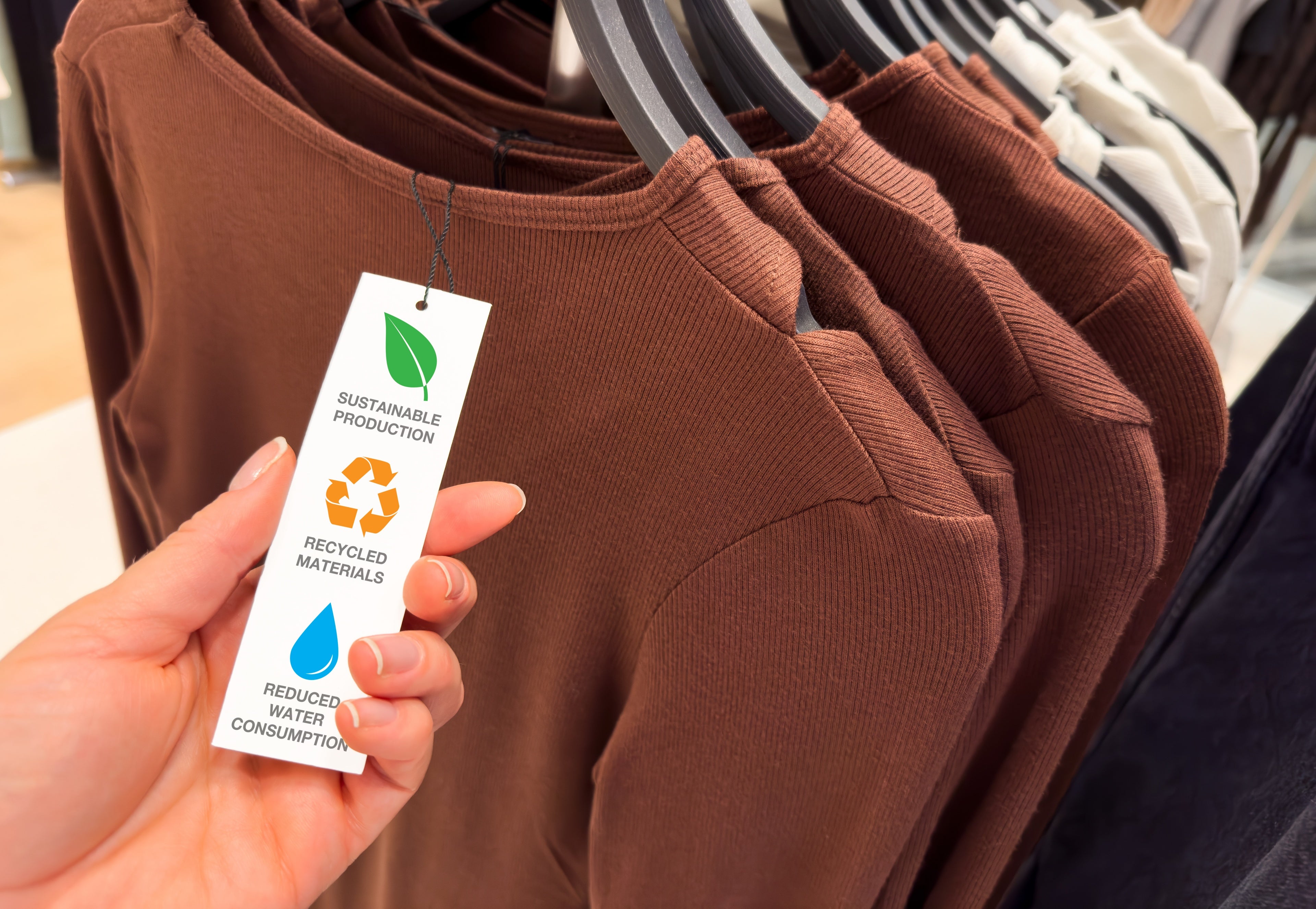Discover Cape Town Sustainable Fashion Boutiques and Brands
Discover Cape Town Sustainable Fashion Boutiques and Brands
Blog Article
Stay Ahead of the Curve by Exploring Innovative Fashion Patterns
In a sector as vibrant as fashion, remaining in advance includes more than just adhering to existing patterns-- it demands an exploration of advancement. Smart textiles, as an example, are changing garments into functional work of arts, while 3D printing is changing style processes with its customizable, waste-reducing capacities. As sustainability comes to be a foundation, advancements like green products and circular style methods are reshaping environmental responsibility - Cape Town Sustainable Fashion. Furthermore, the merging of modern technology and style advertises a new age of consumer involvement. Exactly how, then, can these arising trends redefine the future of style, and what ramifications do they hold for brand names seeking to thrive in this progressing landscape?

Accepting Smart Textiles
Recently, the style sector has actually witnessed a transformative shift with the combination of wise fabrics, a sophisticated development that blends innovation with material. This development represents not only a combination of visual appeals and performance however likewise a considerable leap towards sustainability and personalization in vogue. Smart textiles, also known as e-textiles, embed advanced electronic devices such as sensing units and conductive strings within the textile, making it possible for garments to connect with the atmosphere or the user.
These textiles are created to keep an eye on physical specifications, such as heart price or body temperature level, giving real-time health analytics. Beyond health applications, clever fabrics are likewise being used for adaptive clothing, which can transform color or pattern in reaction to environmental stimulations, therefore using a vibrant fashion experience.
In addition, the advancement of energy-harvesting textiles that create power from movement or sunshine is leading the means for self-sufficient wearable innovation. This development is appealing to eco mindful consumers and developers intending to lower the environmental footprint of style. As r & d in this field advance, wise textiles are anticipated to become significantly common, improving the landscape of contemporary fashion with their multifunctional abilities.
The Rise of 3D Printing
Revolutionizing the production landscape, 3D printing has arised as a game-changer in the apparel industry. This innovative technology has actually enabled developers to push the limits of imagination, producing complex and tailored garments that were previously unimaginable. By leveraging electronic style and additive production, 3D printing assists in the development of intricate geometries and patterns, allowing developers to experiment with brand-new structures and structures.
A noteworthy advantage of 3D printing in style is its capability to produce on-demand, minimizing waste and minimizing inventory demands. This effectiveness not only enhances manufacturing procedures but also enables fast prototyping, enabling developers to bring their visions to life in a much shorter timeframe. Moreover, 3D printing supports personalization somewhat unequaled by traditional methods, providing tailored fits and unique designs tailored to individual customer choices.
The surge of 3D printing has also democratized style, making it accessible to emerging designers who can currently produce high-quality pieces without substantial financial investment in conventional manufacturing framework. As modern technology remains to advancement, the style market is poised to harness the full capacity of 3D printing, checking out new materials and methods that will certainly redefine exactly how fashion is developed and created.
Sustainable Fashion Developments
As the garment industry faces the pushing demand for environmental obligation, sustainable fashion developments have arised at the forefront of transformative change. The growing awareness of eco-friendly effect has sustained a shift towards even more eco-conscious methods hop over to here and materials. Developers and brands are now prioritizing sustainability, including techniques that reduce waste and reduce carbon impacts.
One considerable development is the rise of round fashion, which stresses recycling and upcycling to extend the lifecycle of garments. This approach not just minimizes waste yet likewise encourages customers to embrace a much more mindful method to clothing intake. In addition, the usage of lasting products, such as natural cotton, hemp, and recycled polyester, has acquired grip. These products require less water and power throughout production, considerably reducing ecological effect.
One more advancement depends on the adoption of cutting-edge dyeing methods that make use of waterless processes or natural dyes, consequently reducing the large quantities of water and chemicals typically made use of in fabric dyeing. Furthermore, innovations in biotechnology have resulted in the production of lab-grown natural leather and materials, using environmentally pleasant and cruelty-free choices to standard materials. Through these pioneering initiatives, the fashion business is making meaningful strides towards an extra sustainable future.

Tech-Integrated Apparel
Tech-integrated apparel stands for a cutting-edge blend of style and innovation, reshaping how individuals connect with their apparel. This ingenious domain is marked by the inclusion of clever fabrics and ingrained digital elements, improving both capability and aesthetic allure. From health and fitness trackers embedded in sportswear to warmed jackets controlled using mobile phone applications, tech-integrated clothing offers customers unprecedented ease and versatility.
Introducing brand names are driving this pattern, concentrating on producing garments that reply to environmental stimuli or individual commands. As an example, some garments can change color or pattern in response to temperature level read this article changes, while others include biometric sensing units to check wellness metrics like heart price or stress and anxiety levels. The seamless integration of technology into fabrics additionally extends to environmental sustainability, with initiatives to create self-cleaning textiles or garments that readjust to weather problems, therefore reducing the requirement for several layers.
In addition, the arrival of wearable technology is not just restricted to garments however encompasses accessories like watches and eyewear, further broadening the extent of tech-integrated style. As the sector continues to introduce, the possibility for modification and customization in garments expands, using consumers distinct, tech-enhanced style experiences that provide to their private needs and choices.
Future of Virtual Style
Over the last few years, the future of online style has become a transformative force within the market, leveraging improvements in digital technology to redefine how style is produced, experienced, and eaten. By incorporating increased reality (AR), virtual truth (VIRTUAL REALITY), and 3D style devices, developers can now craft immersive and interactive experiences that go beyond traditional style borders. Online style enables for the production of garments that exist entirely in electronic atmospheres, supplying unlimited opportunities for development without the restrictions of physical manufacturing.
This digital shift not just presents chances for imaginative expression but likewise addresses sustainability worries inherent in more helpful hints standard style practices. Cape Town Sustainable Fashion. By removing the need for physical resources, digital style reduces waste and lessens carbon footprints. Additionally, the surge of digital fashion lines up with the increasing consumer need for unique and personalized experiences, as virtual garments can be personalized and tailored to private preferences with simplicity

Conclusion
The style sector's future lies in the integration of lasting practices and cutting-edge technologies. Online fashion is positioned to redefine customer interactions.
In recent years, the style market has experienced a transformative shift with the assimilation of smart textiles, a cutting-edge development that mixes innovation with textile.As the fashion industry grapples with the pressing requirement for ecological obligation, sustainable fashion developments have emerged at the forefront of transformative change.In recent years, the future of online fashion has emerged as a transformative force within the industry, leveraging advancements in digital technology to redefine how fashion is developed, experienced, and consumed. The rise of online fashion lines up with the raising customer need for customized and distinct experiences, as virtual garments can be customized and tailored to private preferences with simplicity.
The fashion industry's future lies in the integration of lasting methods and ingenious technologies.
Report this page